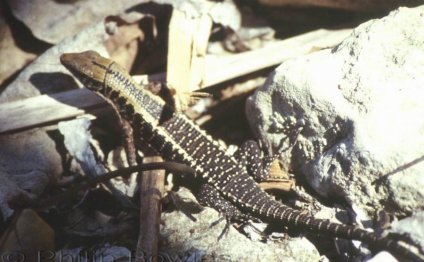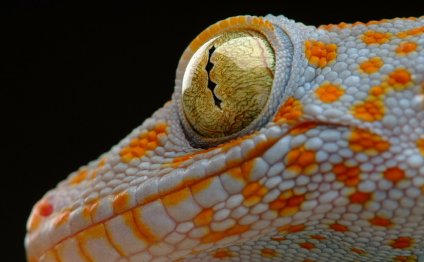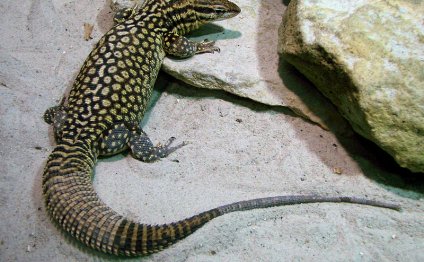
Large lizard breeds
 Geckos are a unique variety of lizard known for their more than 2, 000 species that can be found worldwide. While geckos thrive in warm and tropical habitats and have for approximately fifty million years, these diverse lizards are also often kept as pets. In this article we will cover a number of gecko species commonly kept as pets including the giant day gecko, the white lined gecko, the Central American banded gecko, the Madagascar Ocelot gecko and more.
Geckos are a unique variety of lizard known for their more than 2, 000 species that can be found worldwide. While geckos thrive in warm and tropical habitats and have for approximately fifty million years, these diverse lizards are also often kept as pets. In this article we will cover a number of gecko species commonly kept as pets including the giant day gecko, the white lined gecko, the Central American banded gecko, the Madagascar Ocelot gecko and more.
Why Keep a Pet Gecko?
Before we begin to cover the numerous species of gecko that are kept worldwide we will first try to understand why lizard lovers choose to keep these lizards as pets. Geckos are particularly versatile pets and there are so many species that even the most advanced herpetologist can find a challenge in certain species of gecko. In general the most commonly kept species of “pet” gecko are species which thrive in a glass aquarium and are species that are gentler in nature. These gentle lizards make for unique and beautiful pets that are not only fun to observe but fun to learn from as these tropical lizards are not native to most non-tropical climates. As important members of the ecosystem it is important to be able to learn from the various gecko species in order to fully understand their function as well as their importance to the natural ecosystem.
Geckos are not only fun and important in terms of providing educational opportunities but these lizards are considered by many to be one of the most interesting varieties of lizard in the reptile community. With an incredibly diverse population of species that make them the largest of the lizard families, the gecko is one of the most interesting lizards for any herpetologist to learn from.
The Different Species of Gecko
 As mentioned above the gecko is the single largest group of lizards in existence, in fact there are over 2, 000 gecko species currently recognized worldwide with many more expected to be discovered in the future. Of all of the species of gecko in existence, not all of these species are considered to be suitable for life in a glass aquarium. It is important for herpetologists of all skill levels to understand that while most species of gecko could be kept in captivity, not all of them should be because not all species will thrive. Of all gecko species however, there are a handful of species that are more commonly selected for life as a pet gecko due to a number of characteristics.
As mentioned above the gecko is the single largest group of lizards in existence, in fact there are over 2, 000 gecko species currently recognized worldwide with many more expected to be discovered in the future. Of all of the species of gecko in existence, not all of these species are considered to be suitable for life in a glass aquarium. It is important for herpetologists of all skill levels to understand that while most species of gecko could be kept in captivity, not all of them should be because not all species will thrive. Of all gecko species however, there are a handful of species that are more commonly selected for life as a pet gecko due to a number of characteristics.
The Giant Day Gecko
The giant day gecko is a diurnal species of gecko meaning that they are active during the day rather than at night. This particular species of gecko is native to Madagascar and is considered to be a particularly hardy variety of gecko. The bright coloration of this gecko (bright green and red) makes it a particularly pleasurable gecko to observe. The giant day gecko has been known to grow as long as 12 inches long when kept in captivity and can live for as long as 30 years! The long lifespan of this particular gecko species is just one of the most appealing factors that make it the perfect pet for herpetologists worldwide. While not all gecko species are capable of the glass climbing that many herpetologists like to observe in pets, the giant day gecko is something of an acrobat and can easily climb the sides of a glass terrarium. When kept as pets these geckos prefer to live in solitary or in mating pairs, they do not thrive when kept in communal terrariums.
The giant day gecko prefers to live in a terrarium that is filled with plants and full spectrum lighting and it should be noted that these lizards prefer taller rather than wider tanks. It is important with most gecko species to ensure that the terrarium has higher levels of humidity in addition to having an adequate food supply and clean water source. The food supply that your gecko requires will vary depending upon the species of gecko you select. The giant day gecko prefers to feed on crickets, mealworms, wax worms, large fruit flies and fruit puree.
The White Lined Gecko
The white lined gecko is a somewhat docile gecko in comparison to various other gecko species. This thin but large green or brown gecko is so named after the white line that runs the length of its back and is native to the Indo-Australian Archipelago. This uniquely colored gecko is not only attractive to look at but it also possessed a number of characteristics that herpetologists look for in pet lizards including: the ability to climb, unique behavioral characteristics (curling of the tail when disturbed) and the ability to live in small communities. While most geckos prefer to live in solitary environments, the white lined gecko is capable of thriving in a communal tank if the tank is large enough.
When keeping the white lined gecko it is recommended that a tank be around twenty gallons in order to accommodate a pair of lizards or thirty five gallons or larger in order to accommodate three individuals of the species. This particular species of gecko can grow to approximately ten inches long which is why the size of the tank being used is an important consideration. Like most geckos the white lined gecko requires a high level of humidity in its tank in addition to high temperatures. In comparison to some other species of gecko the white lined gecko is relatively easy to care for in addition to being mild mannered which is what makes this the perfect choice for newcomers to gecko keeping.
Share this Post
Related posts
Colorful lizard
A very large species of chameleon that is endemic to forests in eastern and northern Madagascar. They reach up to 68 cm (27…
Read MoreLarge lizards pets
If handled properly and regularly, even large monitor lizards can be docile pets. Creatas/Creatas/Getty Images Monitor lizards…
Read More











